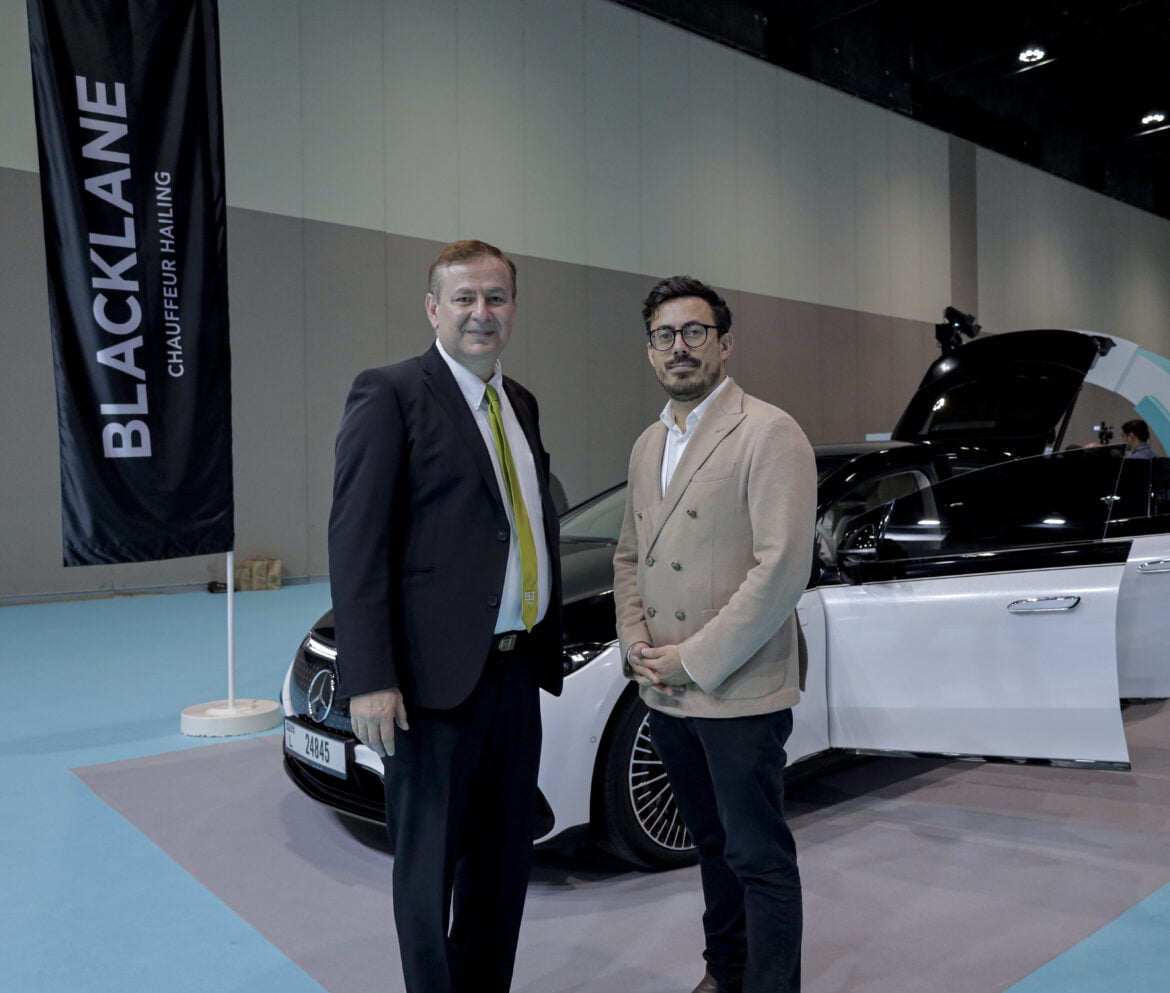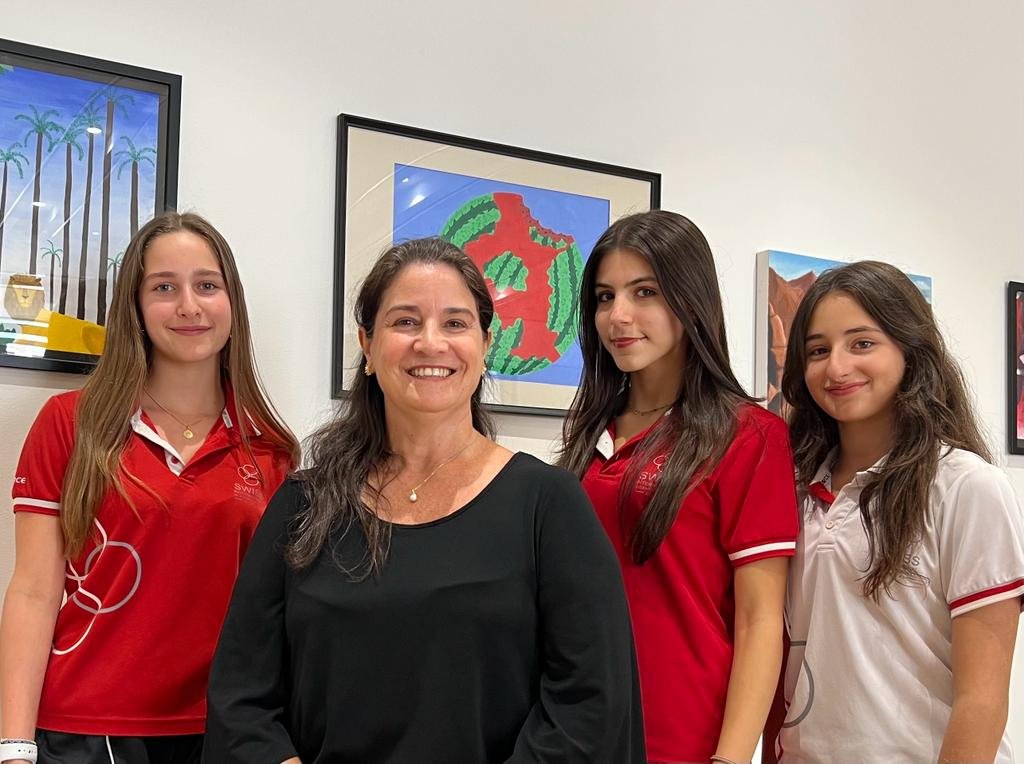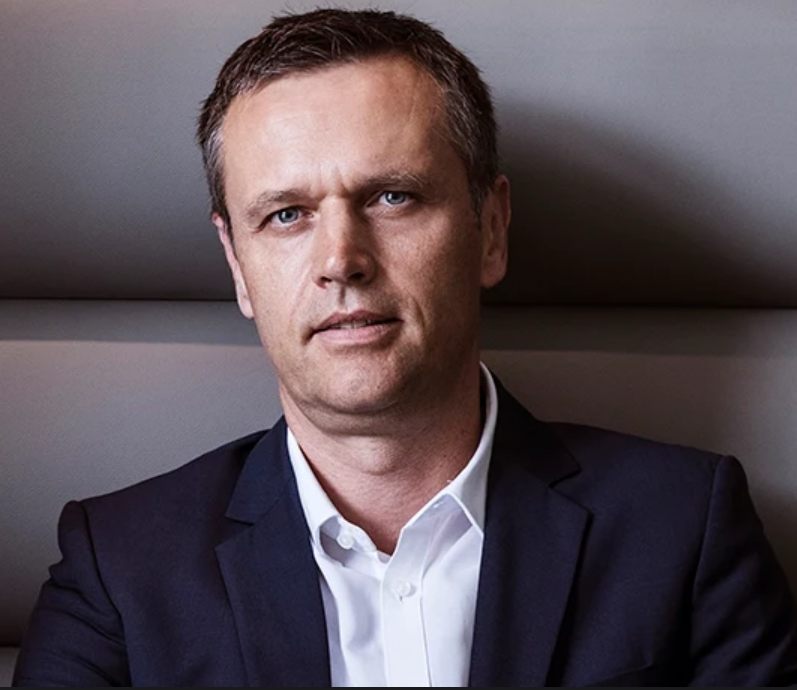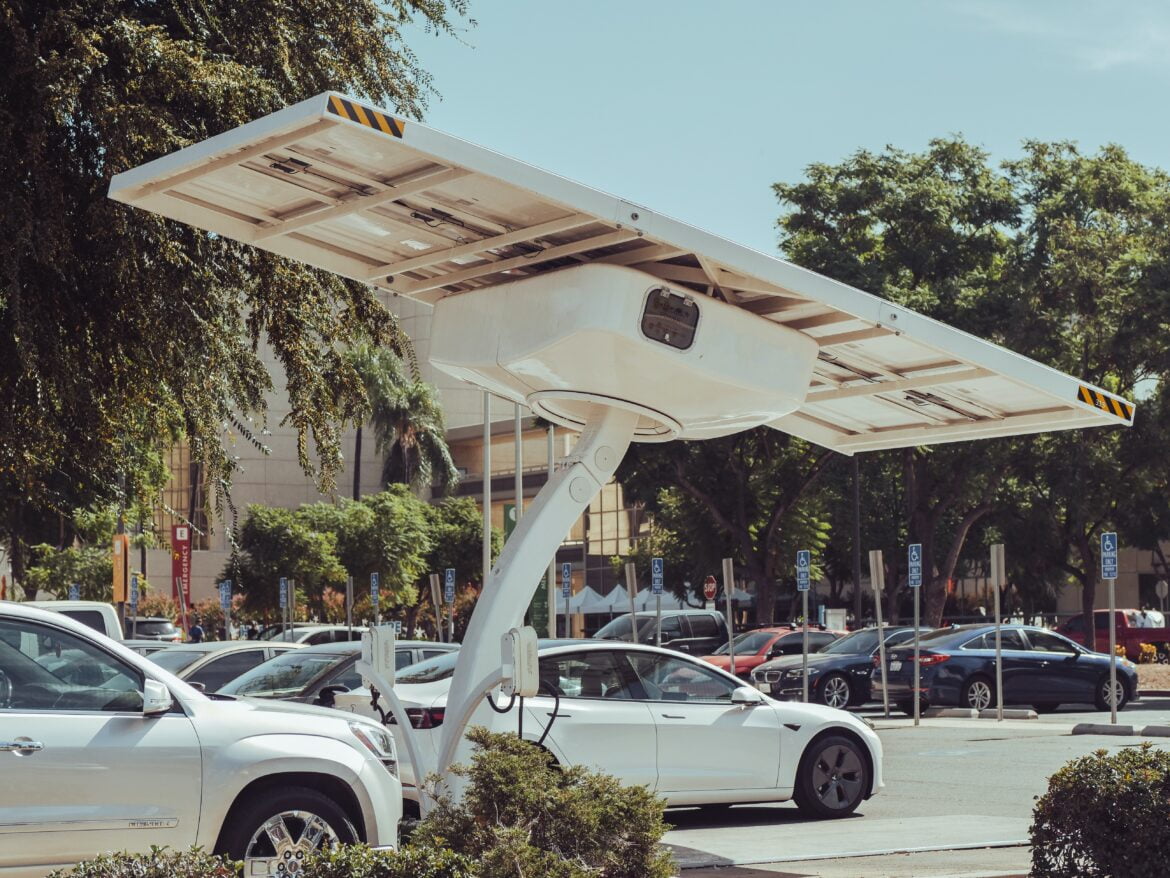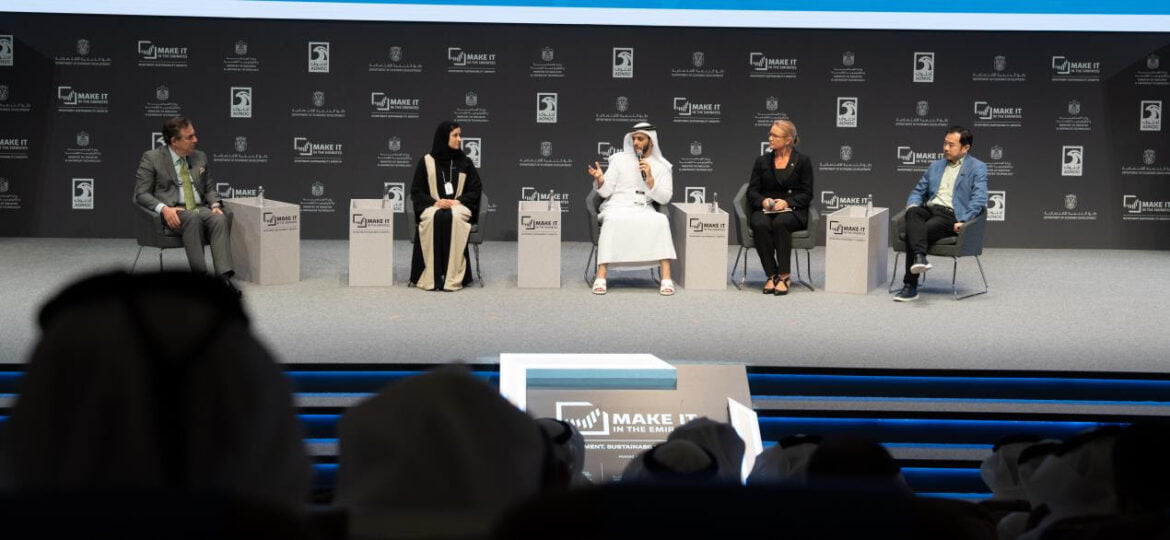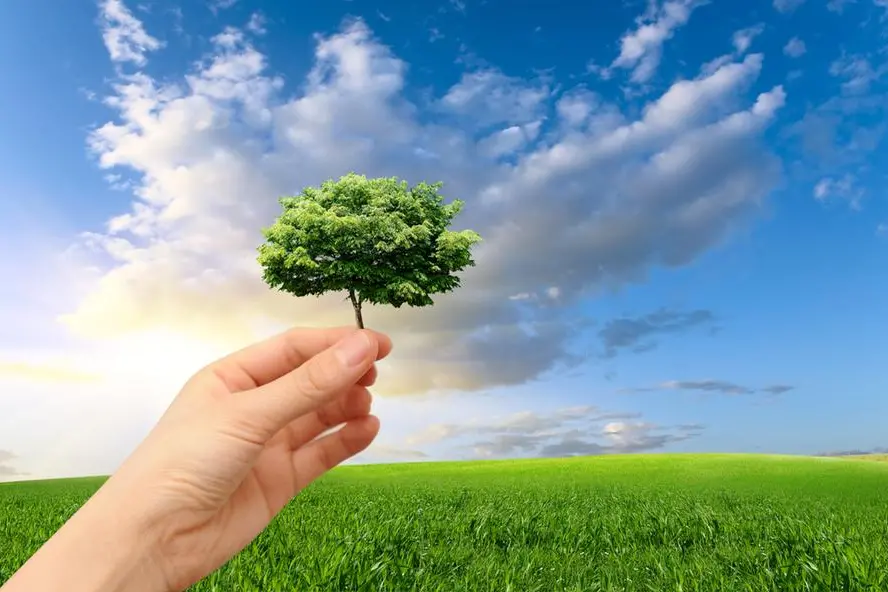Monthly Archives
June 2023
Swiss International School Students Head To Junk Kouture World Finals With Unique Sustainable Dress Made From Sweet Wrappers
written by Mohammad Ghazal
Three eco-conscious Grade 8 students at Swiss International School Dubai have secured a place at the ‘Junk Kouture’ World Finals in London, after designing and making a sustainable dress from used sweet wrappers and plastic food packaging waste.
Violette, Sacha, and Mia, (aged 13 and 14 years old) will be heading to London, UK in October to present their unique dress design, ‘Candylicious’.
The trio are especially excited, as this is the first time they – and the award-winning IB curriculum boarding school – have entered the contest.
Junk Kouture is an annual, global recycled fashion competition which challenges students aged 13 to 18 to design, create and model high-end couture made from recycled materials.
The creative competition takes in elements of fashion, design, engineering and environmental sustainability, encouraging young people to create striking works of recycled couture that wouldn’t look out of place on the world’s most famous runways.
Violette said: “We chose a colourful, bright design, to convey the impact of pollution nowadays, especially plastic and trash going into landfill. Food industries produce so many packaged foods every day, and all those wrappers can harm the environment. Which is why we ended up using food packaging as our main material.”
“We started with simple bases, such as an old bed sheet, a stained skirt and a torn top. After choosing our bases we had to start collecting materials. Halloween was the event that helped us get the most of materials for our project. On Halloween night we went around ‘trick or treating’ and collecting candy wrappers. From there we expanded the materials we used by using pasta packaging, chip bags, food labels and popsicle sticks,” explains Violette.
The team faced many challenges, from organising their time, working as a team and making important decisions. As Sacha puts it: “Our hat design changed three times, before we chose our final idea. We spent the most time on the skirt, as it is a big part of our dress.”
Work was divided between the group. Violette worked on the skirt, doing the sewing and making the train. Mia created the top, using materials such as popsicle sticks and wrappers. She created a unique design to go with the skirt. Sacha created the hat, producing a sturdy base to then build an ice cream cone on.
The outfit, once complete, was then presented at the regional competition, held in Abu Dhabi. Mia modelled the outfit, to the tune Crazy in Love by Beyonce.
Sacha experimented with makeup to create a fun and unique look to complement the outfit.
The team worked on their shortlisted design every Tuesday, with help and guidance from art teacher Teresa Pollard, who said: “I am delighted our design has gone through to the Junk Kouture World Final in London. Only ten designs were selected from the UAE, and with more than 40 design entries in the Abu Dhabi City Final, it is a great achievement for the team and for the school.”
“The team – Violette, Mia and Sacha – worked really hard, with creativity and perseverance while promoting sustainability with their design idea made with sweet wrappers – a beautiful design and a wonderful opportunity to showcase their talent on a world stage – I could not be prouder!”
The girls say they were lucky to be allowed to work on the project during school hours, and to be able to take advantage of the Al Jadaf-based school’s art tools, such as hot glue guns, sewing machines and mannequins.
“Now we have found out we got accepted to the world finals in London, we are so excited and grateful we made it this far. Candylicious can’t wait to present our colourful dress, and hopefully inspire people, while raising awareness of the amount of waste we produce,” concluded Mia.
The Climate Loss and Damage Fund Is Coming Last November’s United Nations Climate
written by Mohammad Ghazal
Change Conference (COP27) in Sharm El-Sheikh, Egypt, concluded on a historic high note, with the last-minute agreement to establish a “loss and damage” fund. The decision to offer financial support to vulnerable countries suffering the worst effects of global warming was a remarkable achievement that has resonated worldwide. But as we move from establishing the fund to implementing it, important questions remain.
What is a realistic funding target? Who will receive financial assistance? Which entities will have final say over the fund?
As we near the halfway mark between COP27 and COP28 in Dubai, the international community must address these critical questions in the spirit of constructive multilateralism that animated the proceedings in Sharm El-Sheikh. Governments, activists, and affected citizens were able to agree on this key plank of climate justice, and we must now demonstrate the same level of collaboration in making it a success.
In March, the COP27 presidency held the first Transitional Committee meeting in Luxor, Egypt, to begin addressing the operationalization of the fund. The composition of the committee ensured a diverse range of voices, and complex issues were discussed in a constructive spirit of cooperation.
The three-day meeting concluded with the adoption of a work plan containing substantive and procedural milestones to deliver actionable recommendations well in advance of COP28. Moreover, the plan outlines how the committee will focus on all elements of its mandated recommendations at each gathering, gradually working toward consensus.
The UN Framework Convention on Climate Change defines loss and damage as the harm caused by human-generated climate change. Solutions to postpone, minimize, or prevent such harm to vulnerable communities worldwide must also be human-generated. It is our collective responsibility to implement effective policies to combat global warming, as well as to alleviate suffering and provide financial support to people whose lives have been upended by rising temperatures.
The Transitional Committee meetings are designed precisely for this purpose: to discuss effective methods and modalities that will turn the concept of the loss and damage fund into a tangible reality while identifying gaps in the existing climate-finance system. Requests and demands are currently being analyzed and considered before finalizing the mechanics to ensure proper implementation.
Backed by a broad range of government, civil-society, and private-sector stakeholders, the fund is designed to consider the short-, medium-, and long-term effects of climate change on developing countries. It will supply financial and technological resources for responding to loss and damage caused by both immediate and slow-onset events. That could mean early-warning systems, disaster-risk reduction, or ecosystem restoration.
As the architect of the fund, Egypt is committed to ensuring its effectiveness, transparency, and accessibility. We strongly believe that all stakeholders must fully collaborate to fulfill its objectives and make a significant change in the communities hit hardest by global warming. The burden of climate change is unequal, and we have the chance to create a much fairer and stability-enhancing balance.
The loss and damage fund represents a major step forward, but it is not enough. We must continue to work tirelessly to reduce greenhouse-gas emissions – the root cause of climate change. This can be achieved by accelerating the transition to clean energy, empowering communities to adapt their livelihoods, and adhering to scientific recommendations in line with internationally agreed principles.
At the same time, the need to create a working loss and damage fund that delivers on the promises made at COP27 is acute. East Africa and the Sahel are currently experiencing severe droughts caused by human-induced climate change, which has resulted in meager rain levels as well as increased evapotranspiration in plants and soil. Plagued by food insecurity, many people in the affected countries are internally displaced or have been forced to migrate, underscoring global warming’s disruptive effects and the increasingly limited ability of both nature and humanity to adapt to them.
The newly created fund will remain a top priority in climate discussions, and it is crucial to enter COP28 with a clear strategy for its effective implementation. We must approach the task with a unified sense of purpose – only by working together and getting the details right can we begin to address the vast inequities of the crisis. But given the significance of the task at hand, I am confident that we will succeed.
Sameh Shoukry is COP27 President and Egyptian Minister of Foreign Affairs.
Copyright: Project Syndicate, 2023.
www.project-syndicate.org
Sustainability is not just good for the environment. It’s good for business
written by Mohammad Ghazal
Local governments across the Middle East have introduced a variety of initiatives to encourage companies to implement sustainable practices, but many neglect planning to make a positive impact on the environment as it can be challenging to see immediate value. As the UAE prepares to host COP28, now is the perfect time for businesses to reflect on their ESG goals and assess the best ways their company can make a difference when it comes to combating environmental challenges and gaining rapport with their customers.
In doing so, businesses small and large will realize sustainable practices don’t just benefit the environment, but also their business itself – for example, it’s just good business to reduce your energy consumption and when you do, you can reduce your bills.
Furthermore, consumers are increasingly supportive of climate-positive initiatives and want to support companies that do good in addition to making purchases that help the environment. Recent studies have shown that 76% of respondents across the UAE, KSA and Kuwait agree that sustainability efforts of a company are likely to positively impact their choice in buying their products, while 68% of respondents said that they would pay more for a product if the company selling it demonstrated sustainable practices. Therefore, companies must adapt their business to accommodate the growing demand from consumers to ensure continued long-term success.
Here are 5 steps to making sustainability a priority and integral part of your business –
1. Implement Sustainable Packaging
Reduce packaging or use recycled/reusable packaging where possible. In recent years, an increasing number of companies – from small start-ups to large corporations have made the switch from single-use plastic to more environmentally friendly materials in an effort to reduce their environmental impact and carbon footprint. At Lenovo, we foster a more circular economy, reducing the usage of virgin materials in products and focusing on renewables. Seek out FSC certified packaging, look for plastic-free options, and if purchasing in large quantities, ask about bulk packaging to minimize waste.
In addition to the benefits of sustainable packaging, the optimization of the supply chain – choosing a mode of transportation that can help reduce carbon footprint such as ocean freight or cargo flights that use sustainable aviation fuel – can make a difference.
2. Seek out More Sustainable Alternatives
Buy and use technology and products that prioritize sustainability. When in the market for new office necessities, be aware of recycled materials and components and make a conscious effort to seek out products that may be a more sustainable option.
Also, beware of “greenwashing” – when companies market their products to be more environmentally friendly than they actually are. With consumer demand exploding for more sustainable products, many marketers have pivoted their strategy to make theirs more appealing and at times, can over-state the true “green” aspects of said product – therefore, businesses and consumers alike should look for the details and a break-down of specifics behind every claim, particularly as new innovations emerge.
On that same note, companies should do their part and be careful on wording and use of terms like “environmentally friendly.” By its nature, technology and other related products are not friendly to the environment, but making significant efforts to reduce impact is what businesses should look for in vendors. Stay vigilant.
3. Reduce Emissions When Possible
Work remote, when possible, to reduce emissions caused by commuting. With more and more companies – from large enterprises to small to medium-sized businesses (SMBs) announcing their return to office – either in a hybrid or full-time capacity – many folks are back to spending a good chunk of their day driving to and from their jobs. If you and/or your employees have to commute, encourage alternative modes of transportation that can help reduce one’s carbon footprint: carpooling, public transportation, and low emission/zero emission cars are all great options to explore if compatible with your commute or budget.
4. Support Causes to Make an Impact
Donate to an environmental organization or cause that aligns with your brand. When thinking of the best ways for your business to support the sustainability cause, consider supporting an area where your brand can make an impact (i.e. automobile industry helping cut down emissions, CPG companies investing in recyclable packaging, etc.). If needed, also look for vendors who can assist or offer services to offset carbon emissions (such as Lenovo’s CO2 Offset Services, which has recently been expanded to the Middle East) especially for larger projects that need to be outsourced.
Ensuring an organic fit between your business and your cause will not only help the environment but also position your brand as an authentic partner in the collective effort to fight for sustainability.
5. Encourage Mindful Habits
Prevent over-consumption and wasteful practices. Regardless of how large or small your organization is, it’s key to reduce unnecessary waste. Incorporating simple practices such as encouraging the use of refillable water bottles, going paperless, or simply turning the lights off after leaving a facility may seem ridiculous to some but over time, can make a difference.
Lastly, encourage employees to bring forward their ideas for increasing sustainability in the office and beyond – that way no stone is left overturned or overlooked. When united with their body of employees, businesses are bound to establish a stronger response to combat over-consumption and waste.
Saving the planet is not just good for the world, it’s good for business – reflect on your sustainability goals to set your business up for long term success that makes a lasting impact.
By Thibault Dousson, Services and Solution Lead, Lenovo META
UAE consumers focus on sustainable packaging increasing, manufacturers urged to support the demand
written by Mohammad Ghazal
UAE residents are increasingly conscious about product packaging and are making purchasing decisions based on how environment friendly it is. This is according to a recent survey conducted by global consulting firm AlixPartners that explores the impact of sustainable packaging on consumer purchasing decisions to encourage more manufacturers to embrace the shift.
The survey found that UAE consumers prioritise packaging recyclability (56%) and the use of recycled materials (47%) most when considering the sustainability credentials of a product’s packaging. However, the findings also revealed that 30% of those surveyed recognise the importance of new formats, such as refillable and reusable packaging, as crucial factors in assessing a product’s packaging sustainability. This highlights the growing trend of consumers valuing practicality, and being receptive to innovative solutions that promote sustainability.
The survey exhibited how the impact of sustainability features on purchasing decisions varies across different product categories. Food products are the most likely to be affected by sustainability features in packaging (74%). Beverage products followed closely behind (54%), and healthcare products were also a significant category (52%). In contrast, tech products were the least likely to be influenced (28%) by eco-friendly packaging.
“These findings demonstrate that consumers are willing to make environmentally conscious choices and are seeking sustainable packaging solutions,” said Alessandro Missaglia, Managing Director, AlixPartners. “Manufacturers are key supply chain enablers to facilitate this transition. They are increasingly recognising that sustainability is a significant business advantage that can create new opportunities. By adopting sustainable practice, manufacturers can minimise waste, and develop products that support customers in their sustainability goals.”
In 2022, packaging production in MENA countries was heavily reliant on plastic packaging, including both flexible and rigid types. Over the past decade, there has been a significant increase in plastic packaging usage, from an average of 40-45% of total packaging value production in 2013 to 60-65% in 2022. However, this trend is expected to reverse due to the emergence of global and regional regulations aimed at promoting sustainability.
Despite the growing importance of sustainable packaging, the survey by AlixPartners also revealed that there are still barriers preventing consumers from purchasing more products with eco-friendly packaging. The top reasons cited by respondents were the perceived higher cost of products with sustainable packaging (55%) and the lack of availability of products with sustainable packaging (44%). In addition, nearly half of consumers (52%) felt that there was a lack of clearly labeled sustainable packaging, which made it difficult for them to identify eco-friendly products on the shelves.
“Transitioning to sustainable packaging design may not result in immediate cost savings for manufacturers, but leading companies that are disrupting this space understand the additional costs incurred is an investment, an essential part of the transition process. Companies should assess their cost structure when redesigning their packaging to determine how much they can invest in sustainable design without it being cost prohibitive. This is especially important as sustainable features in packaging may have broader applications across different product categories,” added Said Massaad, Director, AlixPartners.
The survey was conducted in conjunction with YouGov and polled over 1,000 UAE residents aged 18-50 years old.
The construction industry accounts for nearly 40% of carbon emissions and a third of the world’s waste, with nearly half of all extracted raw materials funneled into the world’s built environment. That’s 100 billion tonnes of raw material taken from our earth every year.
The situation is particularly dire in the MENA region, with rapid expansion via linear models leading to high levels of construction waste. This is compounded by poor waste management.
With a global raw material shortage, price inflation, and the disastrous impacts of construction waste on the environment, the industry must change its harmful habits to build a greener world.
Construction waste and throwaway culture
It’s no secret that construction waste devastates our planet, causing soil and land contamination, environmental degradation, and wildlife displacement. Yet, the way we manage and dispose of it is highly irresponsible. Specifically in the GCC, over half of the total waste is produced by construction and demolition (CDW), with the conventional linear ‘take, make, dispose’ approach being the dominant model.
Back in 2016, in Qatar, for example, construction waste made up over 75% of all solid waste, with most of it diverted to desert landfills contributing to significant land contamination. Egypt is another country noted for its high CDW waste, as is the UAE, which ranks top with one of the world’s highest waste generations per capita, with 75% of solid waste generated from the construction industry. While awareness of the importance of circularity is slowly growing, the MENA is falling behind compared to other regions.
In the EU, for example, the Waste Directive targets extracting value from at least 70% of materials through methods that align with circular economy principles, including recycling and material recovery. Research from the European Environment Agency shows that EU countries are on track to achieve this, with many actually exceeding this by 2016.
Commenting on how the situation is evolving in the MENA, Amira Ayoub, World Green Building Council, highlighted that in the MENA, as construction booms, things need to change – and fast. She notes that the region is already home to over 350 million people, a figure that’s only growing due to rapid urbanisation, set to double from 2010 to 2050. “This means a large demand for buildings, complicated by the effects of climate change and resource deterioration,” said Ayoub.
Cutting construction waste by identifying value & building green
Research from the Ellen MacArthur Foundation revealed that applying circular economy principles to construction waste items such as cement, steel, and aluminium can be transformative for the planet’s health. It found that implementing this in the sector could eliminate nearly half of the emissions from production, a total of 9.3bn tonnes of CO2 in 2050.
Of course, it’s important to note that when we talk about circularity, we’re not just talking about down-cycling, which is the fate that a lot of “recycled” construction waste is destined for, resulting in the value of materials being downgraded for low-grade applications.
Speaking about this, Dr Hassam Chaudhry, Associate Professor, School of Energy, Geoscience, Infrastructure and Society, at Heriot-Watt University Dubai, commented that systemic innovation throughout the value chain is required for real change. “Resources recovered need to be reintegrated into the value chain. Companies need to collect and recover building components and materials in sufficient quantity and quality in an economic manner.”
“In addition, companies at the beginning of the value chain need to adapt the design of buildings to enable the recovery of construction material at the end-of-life and its reintegration into new construction projects.”
Chaudhry explained that this involves using modular construction techniques, such as pre-fabrication, which allow for “quick assembly and disassembly,” as well as the use of recyclable and biodegradable materials.
Echoing this, Ayoub said that while current waste management systems are not inherently designed to maximise value extraction with their wasteful linear approach, the circular economy is an “essential” part of the sustainability solution. Indeed, Ayoub outlines that with the current emissions targets adopted by countries in the region, the construction market is at a “turning point”: “It must align itself to national visions and climate change targets,” said Ayoub.
Bolstering green construction in the region
Governments in the region are beginning to encourage green building and promote the recovery of secondary materials through a variety of initiatives and regulatory changes. For example, in 2019, Saudi Arabia introduced Mostadam, its green building rating system. According to the Ministry of Housing, this system accounts for the local climate and regional differences in the country, which made LEED and BREEAM less applicable. The Kingdom also plans a 60% landfill diversion of C&D waste by 2030. That said, it’s clear that the industry is still adapting to these changes, with research showing that awareness of Mostadam and LEED is still low, plus certification is voluntary, although projects like Neom are pegged to promote the system more widely.
Chaudhry noted that elsewhere in the UAE, the Ministry of Climate Change and Environment (MoCCAE) released a resolution regarding the utilisation of recycled aggregates obtained from the waste generated by construction and demolition activities. “The resolution aims to encourage the use of such recycled aggregates in the development of infrastructure projects, including road construction,” he said. Adding. “The government of Abu Dhabi also made it compulsory to recycle construction materials and has set a requirement of using at least 10 per cent recycled aggregate on all its projects.”
Likewise, Chaudhry highlighted that as part of the UAE Cabinet’s recent approval of the National Building Regulations and Standards, the nation has also committed to reducing construction’s carbon footprint by 5 per cent through decarbonisation efforts.
“These regulations encompass a range of sustainability guidelines for various aspects of construction, including buildings, roads, and housing. Additionally, the regulations also include a National Guide for Building Sustainability that covers aspects of operations and maintenance,” he said.
Amr Nader, Co-Founder and CEO A³&Co, similarly outlined initiatives and regulations shaping green construction, including the Dubai Green Building Regulations and Specifications from the Dubai Municipality, which requires all new buildings in Dubai to meet a minimum level of sustainability.
“Other initiatives include the Qatar Sustainability Assessment System (QSAS), which aims to promote sustainable construction practices in Qatar, and the Abu Dhabi Estidama program, which encourages sustainable design and construction practices in Abu Dhabi,” he said. Nader added that efforts to incorporate circular principles in the construction supply chain are also being made by promoting the use of recycled materials and encouraging the development of sustainable manufacturing processes.
Ayoub, while highlighting the ongoing efforts made by countries in the MENA to go green, called for all governments and the building and construction sector to prioritise and embrace a circular transition that leverages social value for all.
“There are, essentially, three principles involved: designing out waste and pollution, keeping products and materials in use and regenerating natural systems,” she said.
Ultimately, with predictions that the MENA’s construction industry will see a growth rate of 5% in 2023, there is an imperative for the industry to switch gears before it’s too late. For this to happen, regulation must be robust and strictly enforced, and more work must be done within the industry to bolster awareness of best practices and improve training on sites.
Over the last decade, the number of Electric Vehicles (EVs) on the roads has grown considerably. By 2021, there were 16.5 million of them worldwide – triple the number in 2018. And it appears this trend is here to stay, too, with a recent study by Goldman Sachs projecting that by 2035 EVs will account for half of all new car sales worldwide.
The drive for net zero has been key here, while the ongoing energy crisis is also influencing interest in renewables. This is also true in the Middle East, where growing climate change awareness, national net-zero pledges, and soaring petrol prices are fuelling the switch. Forecasts are that in the UAE alone, the EV market will grow at an annual rate of 30 per cent between 2022 and 2028.
However, while EVs go some way to solving transport’s sustainability issue, they’re not without their challenges, charging being a particular obstacle to wider adoption, with lack of infrastructure and energy prices a prime concern for EV users.
Solar EV charging eliminates some of these issues, and the MENA provides the perfect climate to facilitate this. While currently in its nascent stage, this technology could be the next big thing.
A lack of infrastructure
The challenges associated with traditional EV charging have directly impacted EV investment, production and uptake. This is demonstrated in the number of electric cars increasing nearly three times faster than charging points in the last seven years.
In the UK, for example, almost a third of all charging points are located in London; this is despite the government supporting EV development with various subsidies and incentives. This centralisation of charging points in big cities is also witnessed in the Middle East. Many subsequently argue that lack of infrastructure is the primary barrier preventing the EV revolution from being fully realised.
Comparatively, in Norway, where EVs made up the majority of car sales last year, the Norwegian government has supported the development of EV charging infrastructure by establishing fast-charging stations every 50km on all main roads.
Although the EV landscape is still relatively underdeveloped in the MENA, the region is gradually transitioning away from gas-powered cars, spurred by climate change awareness and demand for more sustainable transportation.
Again, tax exemptions and subsidies for EVs are becoming increasingly common, but, similarly, a lack of charging infrastructure is the source of range anxiety, with the exception of the UAE, which currently ranks eighth globally in readiness for electric mobility, with some of the highest charging points-to-vehicle ratios.
Speaking about how these challenges are stunting EV adoption, Dr Fadi Ghaith, Head of the School of Engineering and Physical Sciences at Heriot-Watt University, said that EVs still account for only about 14% of total new car sales. Further, Ghaith predicts that it will take a while to “fully embrace electric vehicles,” with significant investment in charging infrastructure required.
Harnessing the power of the sun
Solar EV charging converts sunlight sourced from solar panels into DC electricity; a connected inverter then changes this into AC electricity which is sent to a distribution board for powering vehicles. The result? Huge savings in emissions.
Researchers at Oregon State University studied the scalability of this via agrivoltaic systems (AVS) to alleviate range anxiety and found that not only is there the potential to reduce around 3.1 million tons of CO2, but that only 3 per cent of total land would be required to supply power to 86 per cent of rural highway access sites in Oregon. This also has applications outside the US, especially in the MENA, a region capable of producing abundant solar energy.
Speaking about this, Ashraf Abdelkhalek, Gulf Sustainability Leader, Schneider Electric, said the Middle East, particularly the UAE, is the world’s third-largest solar power producer and emerging as a hub for sustainable innovation. It’s not unlikely, then, that the region could become a leader in the solar EV charging space.
Abdelkhalek explained that eMobility is “vital” for a sustainable, connected mobility ecosystem: “The MENA region is increasingly embracing electric and solar-powered transportation,” he said. Adding: “The UAE recently introduced the world’s first long-range, production-ready solar electric vehicle, signaling a paradigm shift towards solar EV charging over traditional methods in pursuit of a net-zero future.”
According to Abdelkhalek, robust energy management infrastructure and intelligent, eco-friendly charging solutions are “critical” to this transformation.
Abdelkhalek outlined Schneider Electric’s solar-charged distribution hub as an example of its capabilities in this space. The hub features a solar rooftop, which provides up to 90% of the site’s energy requirements. It also employs 16 Schneider Electric solar inverters, generating 2,088 MWh in its first year, offsetting nearly 1,500 metric tons of CO2 emissions.
Solar lights up in Lebanon
Lebanon is currently grappling with a severe and ongoing power problem, where the government only provides electricity for an average of between one to three hours a day. This crisis has birthed a solar boom, which is being tapped into as the solution to a lack of reliable and cost-effective energy. Between 2010 and 2022, for example, solar power capacity rose from zero to 870 MW; 650 megawatts (MW) of this were installed in 2022 alone. Yet, a lack of regulation around solar installation means that the surge in solar is individualised, privatised, and a luxury only the most wealthy can afford.
This move to solar is, however, being mirrored in the EV charging space, too, that’s according to Tony Sakr, CEO of Sakr Power Group. Sakr said that the country is actively embracing solar EV charging as a “sustainable solution” that bypasses some of the challenges associated with traditional EV charging, such as long charging times and grid restraints. The growing interest in this space in the region has been demonstrated with events such as the E-Motorshow recently held in Beirut and attended by ESG Mena, which showcased EVs not yet available in the Gulf region.
“With abundant sunshine and a growing interest in renewable energy, solar-powered EV charging stations are gaining traction,” Sakr said. He outlined that while the current solar EV charging landscape in MENA is gradually expanding, with the UAE, Saudi Arabia and Jordan leading the way, Lebanon is also witnessing “positive developments.”
According to Sakr, in the region, technologies like smart charging systems, bidirectional charging, DC to DC, and energy management platforms are being developed to optimise solar EV charging.
Sakr projects that the solar EV charging market will evolve significantly in Lebanon. “Increasing environmental awareness, supportive policies, and declining costs of solar technology will drive adoption. Collaboration between stakeholders, including government bodies, utilities, and private entities, will be crucial to develop a robust infrastructure and create a sustainable ecosystem for solar EV charging in Lebanon,” he added.
Indeed to fully realise this and make EV charging green for good in Lebanon and the wider Mena region, key issues such as solar intermittency need to be tended to, with greater investment in new energy storage technologies. As Sakr explains, integration with energy storage solutions enables “efficient utilisation” of solar power and ensures charging availability during non-daylight hours. Likewise, experts say that a robust legal framework is required for the wider adoption of renewable energy in places such as Lebanon.
The sun rises on solar EV charging innovation
Recent years have seen an influx in companies creating solar EV charging solutions that directly address some of the main issues associated with charging. In the UK, for example, 3ti’s Papilio3, dubbed the ‘world’s first’ solar-powered pop-up EV charging station, uses recycled shipping containers fitted with modular canopies, which can support 36 solar panels. The pop-up stations can be deployed easily within 24 hours and without new grid connections. Further, its charge points have charging capacities of 7, 11 and 22 kW, with battery storage capacity of up to 250 kWh.
SolarBotanic’s solar charging trees are also currently in development and intend to tackle some of the issues associated with deploying solar EV charging in dense metropolitan areas. The startup’s charging innovation is built to mimic the structure of a tree and includes a dome made up of photovoltaic (PV) ‘leaves’ that harness solar energy. The innovation has also been selected by the Central Research Laboratory (CRL) for its 2023 Accelerator Programme to develop the first commercial prototype.
While progress is undeniably slow in this area, according to Ghaith, the market is set to grow at a CAGR of around 35% between 2021-2026. He highlighted GHG reductions as one of the primary draws, and indeed, in a year, just one electric car on the road can save 1.5 million grams of CO2; solar EV charging pushes these GHG savings even higher.
Solar EV charging, undoubtedly, has huge potential to shape the future of transport in the region. And, in the Year of Sustainability, leading up to COP28, 2023 could just be the year the world wakes up to the promise of solar.
Mental health in the MENA: A conversation with PwC’s Hamish Clark, Partner, Chief Wellness Officer
written by Mohammad Ghazal
ESG Mena spoke to Hamish Clark, Partner, Chief Wellness Officer, PwC, to get his insights into mental health in the MENA and the role that the public and private sector has in spreading awareness, normalising mental health discussions, and enhancing mental health services.
Hamish, what’s your understanding of the scale of the mental health crisis in the MENA?
In the GCC, the number of people living with a mental health disorder is slightly higher than the global figure, at 15%. Yet, the scale of the problem is likely to be larger as many never seek help from a qualified professional, partly due to continued stigma, minimal health insurance coverage, and a lack of mental health professionals in the region.
In Saudi Arabia, for example, 80% with severe mental disorders do not seek treatment. And the prevalence and impact of mental illness are unfortunately on the rise – according to the Global Burden of Disease study, the contribution of mental disorders to the total burden of disease ranged between 9% and 14% in the GCC, in comparison to 7% in high-income countries globally.
And how are the youth population, specifically, affected?
Unfortunately, no one is ‘immune’ from experiencing mental health disorders at some point in their life – even the youth population. A study in 2021 indicated that across the GCC, almost half (45%) of children and adolescents had experienced depressive symptoms, as measured by the International Depression, Anxiety, and Stress Scale (DASS). The same proportion (45%) had suffered from symptoms of anxiety, while more than a quarter (26%) had experienced stress.
What’s required to address the challenge of mental health in the MENA, and what are the barriers to realising this?
Early intervention, prevention, and effective treatment are key to addressing the challenge of mental health. However, patients struggle to gain access to mental healthcare treatment and support. In the GCC, there are just 2.85 psychiatrists per 100,000 population. This general shortage of qualified mental health professionals across the GCC is further exacerbated by the lack of relevant university-level degree programs in clinical psychology and psychiatry – there is almost no access to master’s or doctorate-level programs in these subjects. Compounding the problem, many qualified and competent mental health professionals in the UAE are unable to practice because of the slow licensing process, which is poorly aligned with internationally recognised licensing standards.
Although Governments are making some progress in measuring and tackling mental health initiatives across the region, such as KSA’s Saudi National Mental Health Survey and Qareebon app, Qatar’s Mental Health Attitudes and Awareness Index, and the UAE’s National Policy for the Promotion of Mental Health, more work and funding is needed.
Mental health is increasingly coming into focus in the workplace. How are you seeing the situation evolve there?
The workplace can be both protective and negative for mental health. There is strong evidence to suggest that work can offer purpose, social interaction, and a work-life balance will support mental health, but high-stress, unhealthy work will do the opposite.
Within the workplace, only 33% of employees feel that they receive support in managing their wellbeing in the Middle East, according to our Hopes and Fears report. A further survey conducted with 1,000 participants in the UAE found approximately 30% of participants were reluctant to seek help due to the fear of being judged by employers and harming their career progression.
And what role do leaders have to play in tackling stigma and promoting mental wellness?
Workplace interventions of improving access to exercise and psychological support have been shown to help reduce absenteeism and increase productivity, which currently contributes to a $1 trillion loss globally each year. Leadership in the workplace needs to lead by example to help dispel the pervasive taboos and stigmas that still exist in many MENA societies, despite recent progress in some countries.
Employers need to embrace initiatives that will help to promote their employees’ health and wellbeing, such as:
- Exploring hybrid-working arrangements,
- Investing in Mental Health First Aid training programmes to encourage peer-to-peer support, and
- Creating a board-appointed leadership role, such as Chief Wellbeing Officer, to champion the mental health and wellbeing agenda from the top down.
Increasing access to mental health professionals, whether through health insurance (in 2021, the Dubai Health Authority upgraded its essential benefits plan to include mental healthcare) and/or leveraging reputable, regulated technologies and advances in Digital Therapeutics (DTx), can also help to drive positive change.
Expanding on this, how do we create mentally resilient societies and what role does technology have to play?
The World Health Organisation (WHO) describes good mental health as not just the absence of a specific mental disorder but as a state of holistic wellbeing. It is worth noting that a lot of failures of ESG adherence result in negative health outcomes – and when communities are displaced, ravaged by climate-change-triggered disease, or failed by improper governance, this will inevitably make it much harder to achieve this state of holistic wellbeing, and sustain a mentally resilient society.
Building mentally resilient societies involves the equitable distribution of and access to resources, including healthcare. DTx, digital mental healthcare interventions (DMHIs) and virtual clinics can bring the healthcare environment from the clinics and hospitals into patients’ homes.
This simple paradigm shift immediately reduces energy consumption, waste and carbon emissions. During the COVID-19 pandemic, healthcare has had its own virtual revolution as many providers ramped up their use of telehealth. One of the largest health systems in the US, CommonSpirit, conducted 1.5 million virtual visits in 1 year between 2020-2021 and estimated that these virtual visits prevented 15K tons of CO2 from being released and saved patients an estimated $11 million by them no longer having to drive to appointments. Clearly, greater access to digital mental health care will have a profound impact not just on improving patient outcomes but also on their carbon footprints.
Additionally, improving awareness around mental health and promoting early psychological screening and intervention is key to building a more sustainable mental health ecosystem, avoiding chronic conditions that put further strain on resources, and even prevention. For example, school-based mental health initiatives are recommended by the WHO as a cost–effective mental health intervention initiative with an incremental cost-effectiveness ratio of $1000-5000 per healthy life year gained.
And how can mental health be prioritised in ESG strategies?
It is without question that mental health must be a priority factor in ESG metrics and subsequent strategies.
At a corporate level, business leaders need to ensure they have appropriate in-house expertise for ESG reporting across all operations in the workplace and embed employee wellbeing as a key KPI to continually measure, monitor and improve, setting meaningful goals and creating a supportive and equitable workplace wellbeing ecosystem for employees.
At a national level, governments need to collect and process more comprehensive, detailed data on mental healthcare and wellbeing, leveraging new technologies and data analytics. Once they fully understand this baseline, they need to increase funding for the recruitment, clinical training, and deployment of mental health professionals across the region and broaden access to digital mental healthcare, including DTx and DMHIs.
Only by working together to prioritise mental health and wellbeing across both the public and private sector ESG strategies will a holistic and sustainable impact be created.
HE Sara Al Amiri: ‘Public-private partnerships are key to UAE’s decarbonisation
written by Mohammad Ghazal
The UAE’s Minister of State for Public Education and Advanced Technology, Her Excellency Sarah Al Amiri, underscored the value of public-private partnerships and the role of ecosystems in the UAE’s ambitious decarbonisation efforts.
Speaking at the opening panel session of the Make it in the Emirates Forum, HE Al Amiri highlighted that decarbonisation, a top priority for the country, extends beyond sustainability, emphasising its pivotal role in fostering value creation, job opportunities, productivity and efficiency within the industrial sector.
HE Al Amiri called on governments to actively collaborate with the private sector, shedding light on the need for a “holistic” approach to unlocking the full potential of industrial growth enabled by R&D, technology and 4IR solutions.
“We work very closely with industrial players. The ministry does not operate as a traditional ministry; we operate in conjunction with our stakeholders, who have a seat at the table. This partnership creates and fosters the right blueprint for advancing the UAE’s industrial sector by integrating 4IR technologies across the production value chain,” said Al Amiri.
The panel session, titled ‘Industrial Competitiveness Through R&D and Technology,’ shed light on the critical role of supporting research and development endeavors in driving economic diversification and fostering growth within the industrial sector. Joining HE Al Amiri on the panel were HE Malek Al Malek, CEO of Dubai Holding Asset Management (DHAM), Anna-Karin Rosén, Managing Director of Saab UAE, and Professor Erix Xing, President & University Professor at MBZUAI.
“Our ICV power has been cited internationally as one of the main enablers of our economic sector, including the industrial sector,” stated HE Al Malek, emphasising the importance of economic diversification and its enabling impact on the industrial sector. He noted that diversification has driven companies to expand their operations in the UAE, enhance competitiveness, and foster strategic partnerships.
HE Al Malek also referred to several success stories of companies that have “made it in the UAE” and have increased their presence. He cited these stories as proof of the UAE economy’s ability to transform ambitions into reality.
Highlighting the crucial role of universities in fostering innovation and shaping future trends across sectors, Professor Xing stated: “Universities provide an ideal environment to foster and stimulate innovation, enabling researchers to carry out their work and train their teams in a distinct setting.”
He noted also that universities must focus on foresight to help countries navigate the future and create national development strategies.
Echoing this sentiment, HE Al Amiri highlighted that the UAE’s focus on pioneering fields, like the space sector, hydrogen, and medtech showcases the country’s ability to navigate transformations and equip future generations of Emiratis with the necessary education and expertise to excel.
Discussing the importance of partnerships with academia and industries, Anna-Karin Rosén, Managing Director of Saab UAE, said: “I cannot overstate the strength of effective collaboration. Collaborating with the government is crucial, and we must also emphasise partnerships with academia and industries. Without the right people and proper funding in the areas where we need assistance, progress will be impeded.”
The Make it in the Emirates Forum is being hosted jointly by MoIAT, the Abu Dhabi Department of Economic Development and ADNOC. The forum has numerous corporate sponsors, including Diamond Sponsors such as Mubadala Investment Company, Emirates Steel Arkan, and Emirates Development Bank (EDB), as well as Gold Sponsors such as Aldar, Tawazun Council, KEZAD Group, Agthia, Edge, and PureHealth.
The event’s Silver Sponsors include First Abu Dhabi Bank (FAB), Dubai Investments, Al Masaood Energy, Emirates Global Aluminum, and Abu Dhabi Fund for Development (ADFD), while the Bronze Sponsors are Etihad Credit Insurance (ECI), Dubai Industrial City, Electro Mechanical Company, Mashreq Bank, Baker Hughes, National Oilwell Varco (NOV), Control Contracting and Trading (CCTC), Weatherford International, and Schlumberger.
28 companies pledge to reduce carbon emissions at the 10th Climate Dialogue by the Ministry of Climate Change and Environment
written by Mohammad Ghazal
Her Excellency Mariam bint Mohammed Almheiri, the UAE Minister of Climate Change and Environment, presided over the launch of the 10th National Climate Ambition Dialogue today. The event, organized by the Ministry in collaboration with Emirates Steel Arkan, rallies under the theme “Accelerating the Pace of Transition to Low Carbon Green Industry”.
The dialogue, the tenth in its series, specifically spotlights the industrial sector and aims to reduce industrial carbon emissions in the UAE. This is particularly timely as the UAE prepares to welcome the international climate community to the forthcoming Conference of the Parties (COP28) under the United Nations Framework Convention on Climate Change later this year.
The event aligns with the Year of Sustainability and seeks to enhance sectoral climate ambition within the country. It is designed to support the UAE’s strategic initiative of achieving climate neutrality by 2050 and strengthen its commitment to international climate action agreements, particularly the Paris Climate Agreement. Furthermore, the event aims to foster collaboration among strategic partners, government entities, and private organizations to achieve these goals.
In her speech, HE Mariam Almheiri reaffirmed the UAE’s keenness to fulfil its global climate commitments by moving forward to achieve climate neutrality goals by 2050. She also pointed out that all partners in the country needed to cooperate to achieve this goal. She expressed her happiness at the pledge of the largest industrial companies in the UAE to reduce their carbon emissions ahead of the Conference of the Parties (COP28) this year.
She said: “The industrial sector is responsible for a large proportion of carbon emissions in the UAE and the world, and we need to work now to find practical solutions to reduce these emissions. We are confident that with the cooperation of all partners and their full commitment, we will be more capable of achieving all our common goals, facing climate change, and creating a more sustainable future for us and future generations.”
HE Almheiri added: “The UAE believes in the urgency of working to limit the global temperature rise to less than 1.5°C to avoid the consequences of climate change and its effects on human life. Therefore, the UAE was the first country in the Middle East to sign the Paris Climate Agreement and provide nationally determined contributions to reduce carbon emissions. With the support of our wise leadership, we are working through the National Dialogue for Climate Ambition and other initiatives to engage all stakeholders in achieving our climate goals and climate neutrality by 2050.”
HE Almheiri extended her gratitude to the representatives of the participating companies and conveyed her satisfaction with their commitment to sign a pledge and set targets for carbon emission reduction in their industrial operations before COP28. She emphasized the significance of this pledge as a crucial stride towards establishing an environmentally conscious industrial sector that addresses climate change, preserves the environment, and fosters sustainable economic growth.
Attendees at the event included HE Engineer Saeed Ghumran Al Remeithi, Chief Executive Officer of Emirates Steel Industries, and representatives from the Ministry of Industry and Advanced Technology, the UAE Space Agency, Fujairah Environment Authority, Dibba Al Fujairah Municipality, the Environment Agency – Abu Dhabi, Dubai Municipality, Ras Al Khaimah Municipality and Emirates Steel Arkan, in addition to representatives from over 150 of the largest manufacturing companies in the country.
During the event, 28 companies operating in the industrial sector in the UAE pledged to implement goals to reduce carbon emissions, adopt more sustainable ways in managing their operations, just ahead of the UAE’s hosting of the COP28 conference in November and December 2023.
These companies are the sixth batch to join the “Climate Responsible Companies Pledge” initiative, part of the “National Dialogue for Climate Ambition”, bringing the total number of companies that have signed the pledge to 90 from various sectors in the country.
Eng. Saeed Ghumran Al Remeithi, Group CEO at Emirates Steel Arkan, said: “We are honoured to host the 10th National Dialogue on Climate Ambition organized by the Ministry of Climate Change and Environment. As the largest publicly traded steel and building materials manufacturer in the UAE and a signatory of the UAE Climate-Responsible Companies Pledge, we are proud to be driving our industry’s decarbonization efforts at a scale that is supporting the nation’s strategic initiative to realize Net Zero by 2050.”
He added: “By actively minimizing our environmental impact and aligning with the country’s ambitious goals for a greener tomorrow, we are leveraging innovation across our products, initiatives and operations while working with our stakeholders to create a bigger impact on the industrial sector’s carbon footprint, accelerate the transition to a low-carbon economy and capture new business opportunities.”
The 10th National Climate Ambition Dialogue witnessed the signing of a memorandum of understanding between Emirates Steel and “DNV” aimed at cooperation in enhancing sustainable financing for decarbonisation, environmental, social risk Assessment, energy transformation, green steel assurance, sustainable purchasing and supply chain, and verification of carbon credits.
The event also included several discussions and workshops on key topics enabling the industrial sector to reduce carbon emissions and implement sustainable and innovative methods that contribute to promoting green financing, the circular economy, and the hydrogen economy, among other modern technologies, notably carbon capture, storage, and removal.




